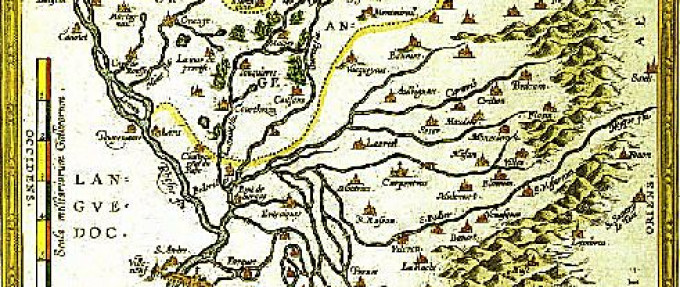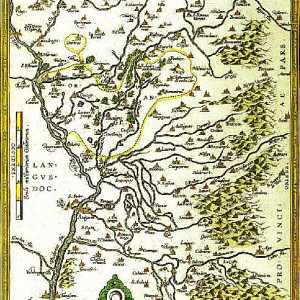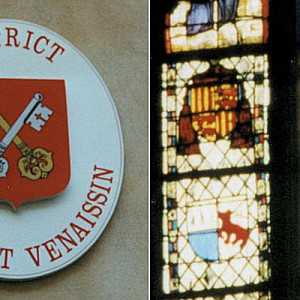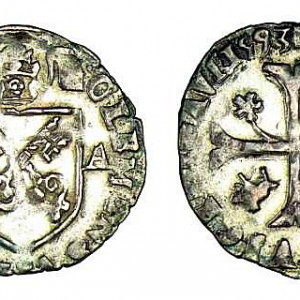
The Comtat Venaissin
The Comtat Venaissin is the former name of the region around the city of Avignon, roughly the area between the Rhône, the Durance and Mont Ventoux, with a small addition located to the north around Valréas. The Comtat was an enclave within the Kingdom of France, meaning it was independent from the Kingdom until the French Revolution. The region is still known today as the Comtat Venaissin, although in political sense, it is now merged into the department called Vaucluse.
The Comtat was bequeathed by the Count of Poitiers to the Pope in 1271. The name comes from Venasque, the former capital, until it was replaced by Carpentras in 1320.
The city of Avignon, until then a distinct Comtat was sold by Jeanne de Provence to the Pope In 1348. At that date, the two comtats were joined to form one Papal enclave.
It is also worth mentioning that the Comtat became an haven for French Jews, who received better treatment under papal rule than in the rest of France. The oldest synagogue in France, built in the 14th century, is in Carpentras.
Although the Comtat was many times invaded by French troops in the 17th and 18th centuries, only the French Revolution brought the Comtat into the Vaucluse départment on August 18, 1791. On that day, representatives of each city and village gathered in Bédarrides to decide to merge the Comtat to France. This is considered as one of the first acts expressing the right of peoples to self-determination.
The enclave’s inhabitants did not pay taxes and were not subject to military service. This explains that living in this area was definitely more attractive than the rest of France.
The Synagogue de Carpentras is located Place Maurice Charretier, 84200 Carpentras.
The Avignon Papacy
Following a conflict between Philippe IV, King of France and Boniface VIII, Clement V, the archbishop of Bordeaux, was elected pope in 1309. Clement decided not to move to Rome and after a few years settled down in Carpentras.
Following Clement’s death, Jean XXII established himself in Avignon. He was followed by five other popes, all French until the end of this era in 1378.
Pope Clement V: 1305–1314
Pope Jean XXII: 1316–1334
Pope BenoitXII: 1334–1342
Pope Clement VI: 1342–1352
Pope Innocent VI: 1352–1362
Pope Urbain V: 1362–1370
Pope Gregoire XI: 1370–1378
The decision made by Grégoire XI to return to Rome was the beginning of a schism leading to a period with popes elected in both cities of Rome and Avignon. The two “antipopes” were Clement VII (1378 – 1394) and Benoit XIII (1394 – 1423, expelled from Avignon in 1403).




